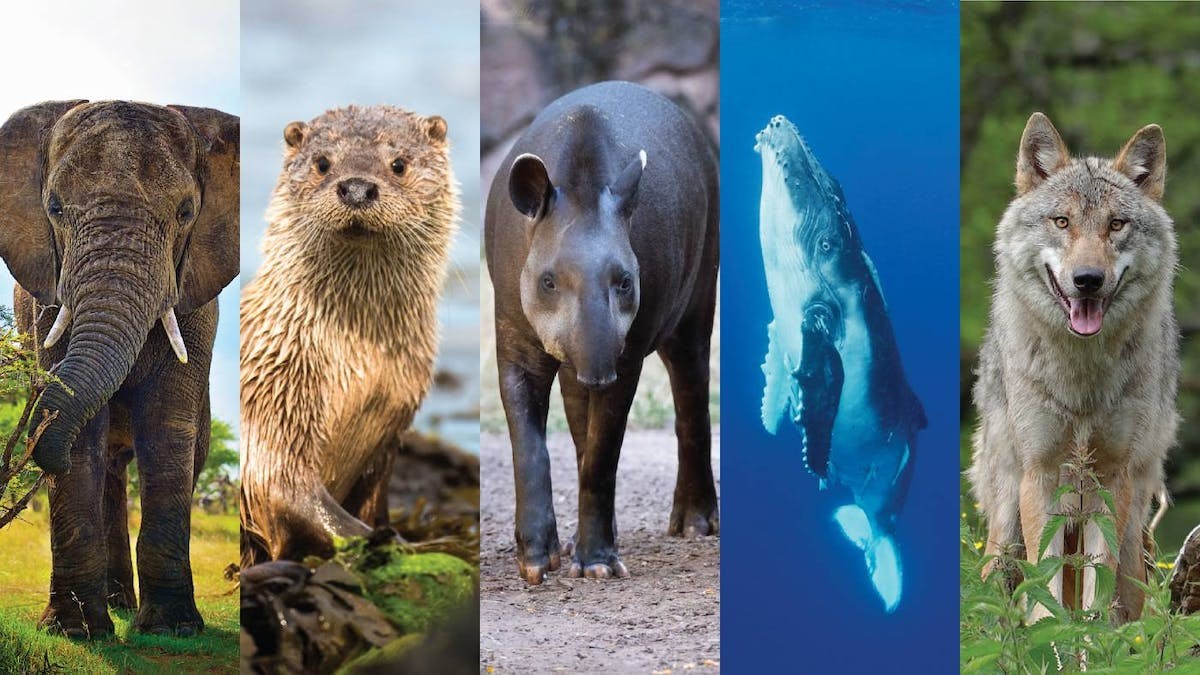
Disclaimer: Copyright infringement not intended.
Context
- A new analysis published in the journal Nature Ecology & Evolution suggests that extreme weather is linked to climate change might be much harder on native species than on non-native ones.
Introduction
- The Earth is now about 1.1°C (2°F) warmer than it was in the 1800s.
- Based on current projections, global temperatures will rise by 2.7°C (4.8°F) by the end of the century.
- As the planet warms, it is likely that extreme weather events — heat waves, cold snaps, droughts and floods — are becoming more common and destructive.
- Changes in one area influence changes in other areas and animals will feel the impact.
Climate Change and Animals
- Half of all animal species in the world’s most biodiverse places, like the Amazon rainforest and the Galapagos Islands, are at risk of extinction from climate change.
- And climate change is threatening species that are already suffering from the biodiversity crisis, which is driven primarily by changes in land and ocean use (like converting wild places to farmland) and direct exploitation of species (like overfishing and wildlife trade).
- With species already in rough shape—more than 500,000 species have insufficient habitat for long-term survival—unchecked climate change is poised to push millions over the edge.

Climate-driven threats to wildlife
Habitat loss:
- Rising temperatures affect vegetation, food sources, access to water and much more. Ecosystems may become uninhabitable for certain animals, forcing wildlife to migrate outside of their usual patterns in search of food and livable conditions, while causing other animals to die off.
For example, if rates of habitat loss and fragmentation due to human development and global warming continue—combined with deaths from poaching—we could lose Africa’s elephants in the next 40 years.
Natural disasters:
- Already today we face a five-fold increase, compared to 50 years ago, in climate and weather-related natural disasters such as droughts, wildfires and hurricanes. These disasters cause catastrophic loss of life and habitat for people, pets and wildlife.
Australia’s Black Summer bushfires (2019–20), for example, burned 186,000 square kilometers (72,000 square miles) and are estimated to have killed or displaced three billion koalas, kangaroos and other animals.
Human-wildlife conflict:
- Climate change intensifies human-wildlife conflict through habitat loss and extreme climate events, forcing people and wildlife to share increasingly crowded spaces.
- As ecosystems change, people and wildlife roam farther in search of food, water and resources.
- Human-wildlife conflict often results in devastating impact for the animals affected.
For example, jaguars sometimes prey on domestic animals and disrupt human livelihoods, leading to retaliatory killings that result in the further decline of already-dwindling jaguar populations.
Extinction:
- The combination of challenges could cause many animals to go extinct.
- The world’s most vulnerable animals, including those already near extinction, will likely face the biggest threats.
The North Atlantic right whale, for example, teeters on the brink of extinction, with an estimated 336 individual animals remaining, the lowest count in 20 years. A warming ocean, coupled with a failure to decrease conflicts with humans (vessel strikes and entanglement in fishing gear), could drive this species to extinction.
.jpg)
The Recent Study
- The researchers, led by Xuan Liu, an ecologist at the Academy of Sciences, analyzed 443 studies that examined the responses of 1,852 native and 187 non-native species — from land, freshwater and marine habitats — to extreme weather.
Findings published in Nature Ecology & Evolution
- Sudden, violent changes in conditions could be helping to fundamentally reshape ecosystems.
- On average, non-native species tended to show more positive responses to extreme weather, or, at least, less negative ones.
- Where non-native land species might take a hit in population numbers from a disaster, for example, the effects on native land species could sometimes be more far-reaching, with native populations also losing geographic distribution and struggling to recover.
- According to the analysis, native terrestrial animals tended to be hit hard by heat waves, cold spells and droughts, while native freshwater animals were generally susceptible to most events apart from cold spells.
- Non-native terrestrial animals, however, were generally only affected by heat waves, while non-native freshwater animals tended to suffer only from storms. Non-native marine animals were largely indifferent to most disturbances.
Why non-native animals fare better?
- One reason non-native organisms might withstand extreme weather more readily is that species able to rapidly establish populations in alien environments tend to be those with high reproduction rates, more adaptable behavior and physiology, and higher tolerance for disturbances.
- These are precisely the sorts of animals able to take advantage when extreme weather wipes out a chunk of native animals.
- In these cases, in contrast to the common story of invasive species directly outcompeting native ones, they may simply prove “more resistant to extreme events and ready to take over after these occur.”
Need to protect native species
- According to a report by the Intergovernmental Science-Policy Platform on Biodiversity and Ecosystem Services for the United Nations, thousands of invasive species introduced to new ecosystems around the world are causing more than $423 billion in estimated losses to the global economy every year by harming nature, damaging food systems and threatening human health.
- One useful takeaway from the study, is the importance of monitoring areas recently hit by extreme weather events and of focusing management efforts on helping the quick recovery of native species.
- Promoting recovery, avoiding disappearance or helping native species that are known to be vulnerable to extreme events could give native species enough time to evolve and adapt to novel weather patterns driven by climate change.
|
PRACTICE QUESTION
Q. The impacts of climate change on wildlife are profound and far-reaching. What are the climate-driven threats to wildlife? Discuss. Give a cross comparison of how extreme weather affects native and non-native species.
|




